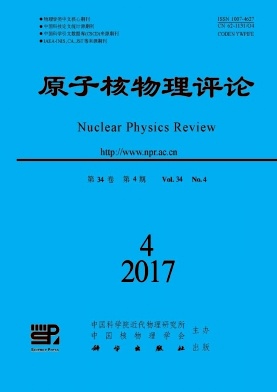|
[1]
|
YU Zengliang, HE Jianjun, DENG Jianguo, et al. Anhui Agricultural Sciences, 1989(1):12. (in Chinese) (余增亮, 何建军, 邓建国, 等. 安徽农业科学, 1989(1):12.) |
|
[2]
|
WU Ding, LU Guihong. China Brewing, 2002, 21(s1):31. (in Chinese) (吴定, 路桂红. 中国酿造, 2002, 21(s1):31.) |
|
[3]
|
FENG Zhihua, SUN Qiling. Sichuan Food and Fermentation, 2002, 38(2):6. (in Chinese) (冯志华, 孙启玲. 食品与发酵科技, 2002, 38(2):6.) |
|
[4]
|
LI Huanqin, WANG Wenlei, WANG Zhaokai, et al. Amino Acids & Biotic Resources, 2016, 38(2):1. (in Chinese) (李欢琴, 王文磊, 王昭凯, 等. 氨基酸和生物资源, 2016, 38(2):1.) |
|
[5]
|
LIU Jianguang, WANG Yongqiang, Zhao Guiyuan, et al. Crops, 2016(3):12. (in Chinese) (刘建光, 王永强, 赵贵元, 等. 作物杂志, 2016(3):12.) |
|
[6]
|
GUO Xiaopeng, ZHANG Miaomiao, MIAO Jianshun, et al. J Radiat Res Radiat Process, 2015, 33(4):7. (in Chinese) (郭晓鹏, 张苗苗, 缪建顺, 等. 辐射研究与辐射工艺学报, 2015, 33(4):7.) |
|
[7]
|
MIAO Jianshun, YANG Jianshe, ZHANG MiaoMiao, et al. J Radiat Res Radiat Process, 2014, 32(2):1. (in Chinese) (缪建顺, 杨建设, 张苗苗,等. 辐射研究与辐射工艺学报, 2014, 32(2):1.) |
|
[8]
|
WEI Zengquan, LIU Yuyan, WANG Guiling, et al. J Radiat Res Radiat Process, 1993(02):90. (in Chinese) (卫增泉, 刘玉岩, 王桂玲, 等. 辐射研究与辐射工艺学报, 1993(02):90.) |
|
[9]
|
WEI Zengquan, HAN Guangwu, MA Shouwu, et al. Nuclear Techniques, 1995(2):90. (in Chinese) (卫增泉, 韩光武,马受武. 核技术, 1995(2):90.) |
|
[10]
|
WEI Zenquan, HAN Guangwu, ZHOU Guangming, et al. ACTA Biophysica Sinica, 1996, 20(2):315. (in Chinese) (卫增泉, 韩光武, 周光明, 等. 生物物理学报, 1996, 20(2):315.) |
|
[11]
|
WEI Zengquan, LI Wenjian, XIE Hongmei, et al. Laser Biology, 1996(3):888. (in Chinese) (卫增泉, 李文建, 撷红梅, 等. 激光生物学报, 1996(3):888.) |
|
[12]
|
YUAN Shibin, WEI Zengquan, GAO Qingxiang. Acta Laser Biology Sinica, 2002, 11(1):70. (in Chinese) (袁世斌, 卫增泉, 高清祥. 激光生物学报, 2002, 11(1):70.) |
|
[13]
|
HAN Jianwei, YU Zengliang. Acta Biophysica Sinica, 1998, 14(4):757. (in Chinese) (韩建伟, 余增亮. 生物物理学报, 1998, 14(4):757.) |
|
[14]
|
SONG Daojun, YU Xun, YAO Jianming, et al. Acta Biochimica et Biophysica sinica, 1998(6):570. (in Chinese) (宋道军, 余汛, 姚建铭, 等. 生物化学与生物物理学报, 1998(6):570.) |
|
[15]
|
WANG Xinfu, LU Ting, ZHOU Hongyu, et al. Atomic Energy Science and Technology, 2002, 36(6):531. (in Chinese) (汪新福, 陆挺, 周宏余, 等. 原子能科学技术, 2002, 36(6):531.) |
|
[16]
|
XIE Jingyi, ZHOU Hongyu, WANG Ping, et al. Acta Physica Sinica, 2003, 52(10):2530. (in Chinese) (谢竞神, 周宏余, 王平, 等. 物理学报, 2003, 52(10):2530.) |
|
[17]
|
HUANG Xuchu, HOU Juan, LIU Xiaoyong. Journal of Nuclear Agricultural Sciences, 2009, 23(6):976. (in Chinese) (黄旭初, 侯娟, 刘效勇. 核农学报, 2009, 23(6):976.) |
|
[18]
|
CLOETENS P, LERBS-MACHE S. Proceedings of the National Academy of Sciences, 2006, 103(39):14626. |
|
[19]
|
SRIM:http://www.srim.org/. |
|
[20]
|
CASINO:http://www.gel.usherbrooke.ca/casino/. |
|
[21]
|
Geant4:http://geant4.web.cern.ch/geant4/. |






 甘公网安备 62010202000723号
甘公网安备 62010202000723号 DownLoad:
DownLoad: